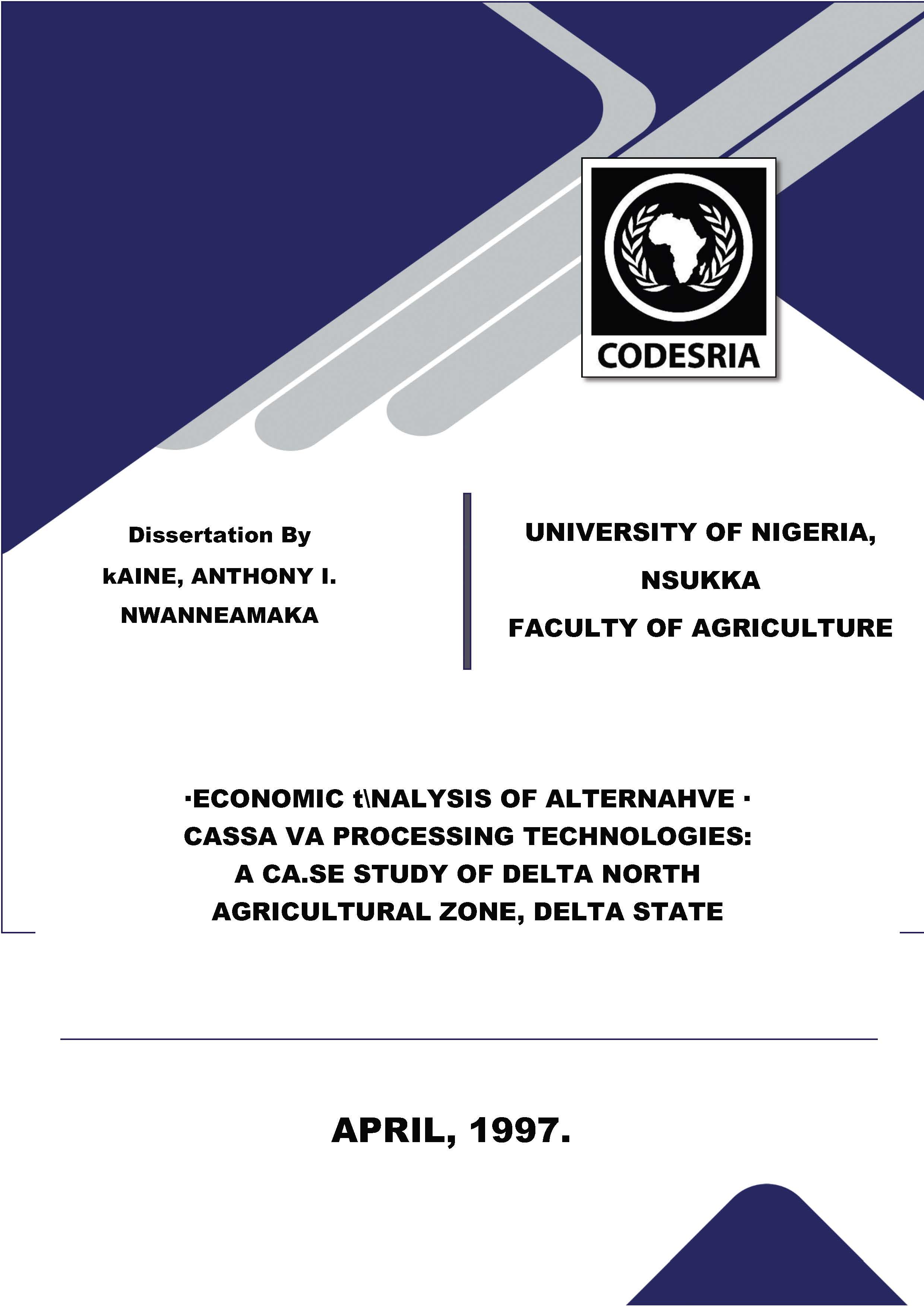ECONOMIC ANALYSIS OF ALTERNAHVE CASSA VA PROCESSING TECHNOLOGIES: A CASE STUDY OF DELTA NORTH AGRICULTURAL ZONE, DELTA STATE
Mots-clés :
AGRICULTURAL ZONE, DELTA STATESynopsis
Thi$ study on the economic analysis of alternative cassava processing technologies was conducted in Delta State with Particular emphasis on Delta North Agricultural zone, Delta_State. The study covered 60 farmers/processors randomly selected from five Local Governmènt Areas in the study area. Frequencies, means, percentages and pariial budgetir,g technique were employed in analyzing the data.. Both traditional and modern processing technologies were used for processing cassava tubers through a number of operations. Gari, akpu, starch, abacha and cassava flour were the main products obtained from pro·cessing cassava in the study area. Cassava tubers used for processing were obtained frorn persona! farms, spouses farm as well as purchased from the market. Paid and family labour services were employed for processing cassava tubers. Women nd children (male and female) contributed in the various processing operations in the study area. Net margin of cassava processing for thé different products were estimated and discussed. The. analysis showed that abacha is more _proi'itable wi_tha net revenue of =N=3,200.70/5,000kg. This-is: followed by akpu and gari/starch with a net revenue of =N=1,031.70/5,000l<g and
=N=748/5000kg respectively. To analyse the economics of the different process_ing technologies,partial budgeting
technique was employed. The result shows that g labour cost of ==N=200 was incurred by using the r'tradition al processing technology while a total amount of =N=300 would be lost by using the modern processing. The net profit change of -=N=300 indicates that a' total labour change of =N300 was incurr-ed by using a machine (modern processing technology). Therefore, it wou·ld be more econo.mical to use the traditional processing technology at their small processing capacity.
Téléchargements
Références
Al-Hassan ( 1992). "Industrial demand for Cassava in Ghana: Prospe·cts and Problems. 11 In Tropical Root ,Crops: Promotion of Root crop-Based Industries. Akoroda, M. O. and O. B. ·· Arene ( eds. ) . Proceedings of the Fourth Symposium of the International Society for Tropical Root Crops - Africa Branch held in Kinshasa, Zaire 5-8 December, 1989.
J.E., G.N. Harshi and D.J. Rogers (1974). Cassava Role a. Staple. Colorado University of Colorado Press.
Ashiedu, J.J.(1989). Processing Tropical Crops - a Technological APProach. Published by the Macmilliam Press Ltd., London and Basingstoke.
Bachmann·, E. ( 1981). "Yam Holdings in Southern·Nigeria:Bo'Otl Bootl Economie Assessment of Problems and Trends." Discussion Paper No. 2/81 IITA Ibadan.
R .H. (1974). 11Postharvest Deterioration of Tropical Roo.t Crops: lasses and their control1' in Tropical Science Vol. 16, No.2, pp. 49-63.
R.H., T.S. de Buckle, O.S. Cardenas, G. Gomez and E. Herves ( 1976). ;'Changes in quality of Cassava Roots during storag_e." ·Journal of food Technology, Vol.11, pp. 245-26•






